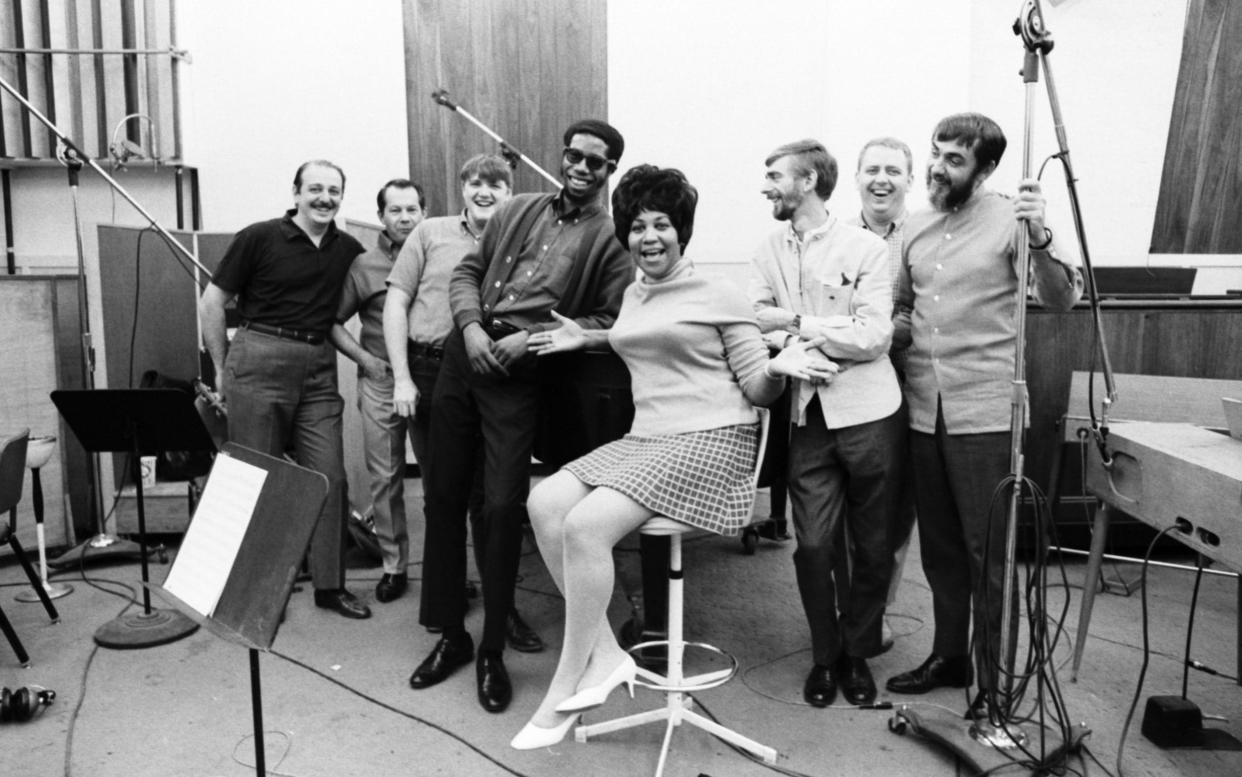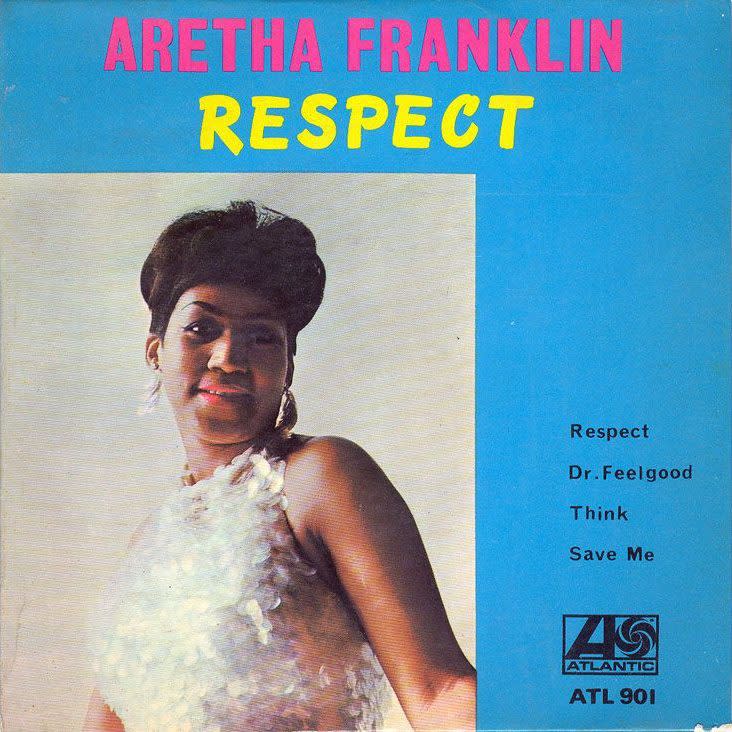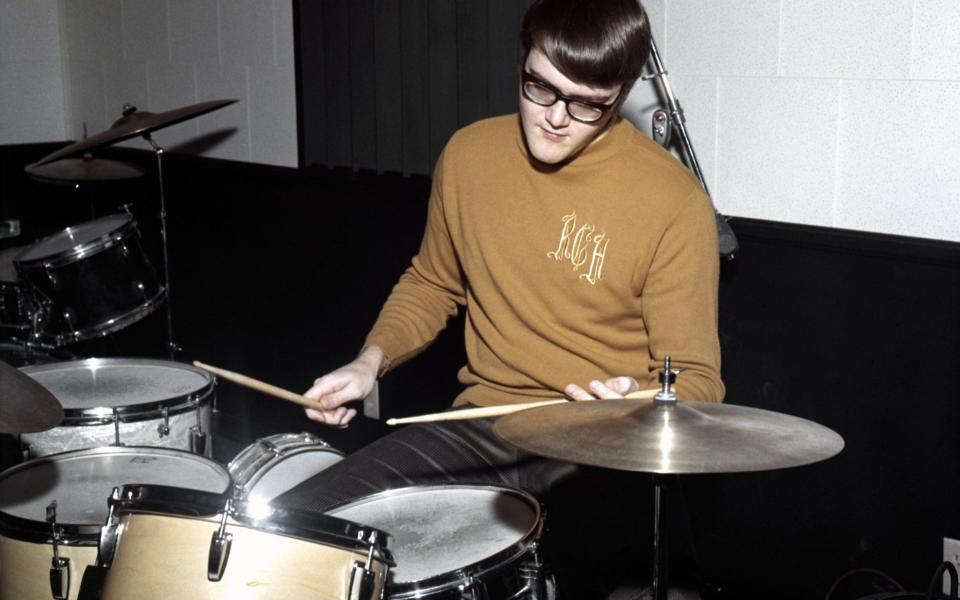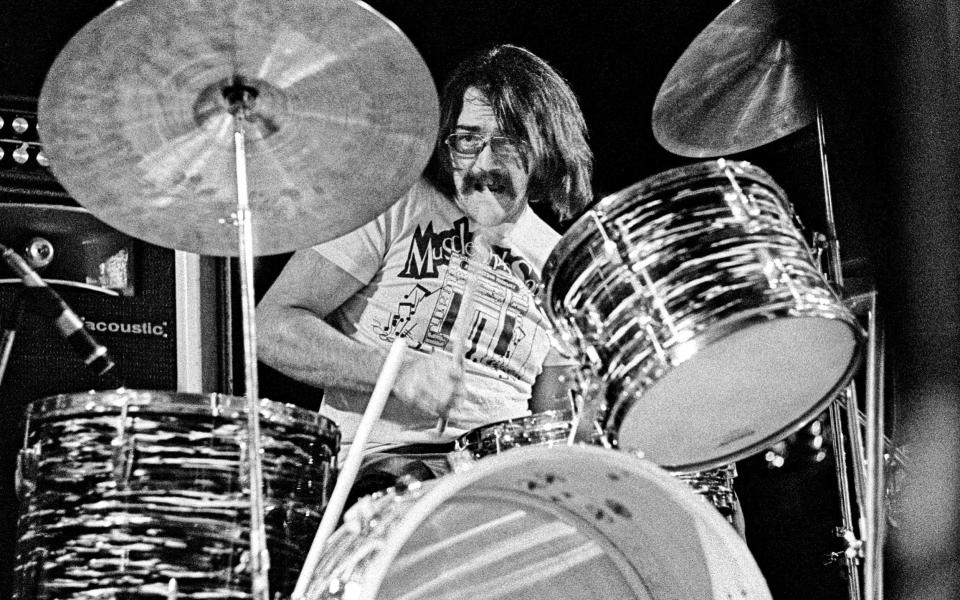Roger Hawkins, Muscle Shoals drummer whose playing underpinned the hits of Aretha Franklin – obituary

- Oops!Something went wrong.Please try again later.
- Oops!Something went wrong.Please try again later.
- Oops!Something went wrong.Please try again later.
- Oops!Something went wrong.Please try again later.
Roger Hawkins, who has died aged 75, was the drummer in the celebrated Muscle Shoals rhythm section that put the groove into numerous hits of the 1960s and 1970s; the US No 1s alone on which he played included Aretha Franklin’s Respect, the Staple Singers’ I’ll Take You There and Percy Sledge’s classic ballad When a Man Loves a Woman.
The bespectacled Hawkins was only 20 when his career began to take off in April 1966 after drumming on Sledge’s track, recorded for the premier R&B label Atlantic. Its manager, Jerry Wexler, was impressed not just by Hawkins’s powerful yet supple technique – he would later hail him as “the greatest drummer in the world” – but also by the harmonious mix of black and white musicians at the FAME studios in Muscle Shoals, Alabama, where Hawkins was doing session work.

The atmosphere there mirrored that at the Stax studios in Memphis where Wexler had previously recorded many hits. He began to bring artists such as Wilson Pickett to Muscle Shoals, and later in 1966 Hawkins provided the propulsive rhythm for the singer’s Land of 1000 Dances.
“All the musicians stopped playing except Roger Hawkins, who continued to play with every ounce of strength he had in his body,” recalled Rick Hall, who ran the studio. “I poured the echo into the drums and Pickett started screaming, ‘Nah, nah nah nah nah, nah nah nah nah, nah nah nah, nah nah nah, nah nah nah nah.’ ”
Hawkins, who would also feature on Pickett’s Mustang Sally, had used a beat he had noticed the singer making in the studio by tapping his foot against his leg. He credited much of his success to his ability to listen as well as to play, and made a key innovation in recording technique by revising his performances after hearing them played back to him.

His use of the cymbals and the snare drum was particularly distinctive, with Hawkins attributing this to his drawing on a huge mental catalogue of older songs to which he would bring a fresh approach.
Much, however, still depended on musical instinct, most notably in Hawkins’s contribution to Aretha Franklin’s success. When she came to Muscle Shoals in 1967, she was known only as a jazz singer, though Wexler saw her potential for pop and soul. As she began recording with Hawkins, Wexler urged him to play the bass drum in a more syncopated, less gospel-influenced style. “Roger’s playing what I want,” said Aretha Franklin firmly. The result was a string of classic songs which included Think, Respect and Chain of Fools.

Hawkins was frequently teamed with the keyboards player Barry Beckett, bass guitarist David Hood and guitarist Jimmy Johnson, the latter two of whom he had known since his teens. In 1969 the quartet broke away from FAME to set up their own Muscle Shoals studio at 3614 Jackson Highway, the address subsequently furnishing Cher with an album title.
Others who recorded there included the Rolling Stones, Eric Clapton, J J Cale, Leon Russell, Boz Scaggs, Etta James and Rod Stewart (Atlantic Crossing, 1975). In the early 1970s the “Swampers”, as the rhythm section were known because of their Southern roots, also briefly formed part of Steve Winwood’s group Traffic.
Their exposure to reggae on a tour of England with Winwood led Hawkins to adopt a Jamaican-style beat for the Staples Singers’ hit I’ll Take You There (1972). The four then played with Paul Simon on tracks such as Kodachrome and Loves Me Like a Rock, from his 1973 album There Goes Rhymin’ Simon, and subsequently collaborated with Bob Seger (We’ve Got Tonight, 1978) and Dr Hook. In 1974, the Swampers were among those name-checked in Lynyrd Skynyrd’s Southern rock ode, Sweet Home Alabama.
An only child, Roger Gail Hawkins was born at Mishawaka, northern Indiana, on October 16 1945. His father later managed a shoe store in Florence, Alabama, where Roger grew up. His earliest exposure to drums was at Pentecostal church services to which an aunt took him. By the age of nine he was listening to Gene Krupa records and practising drumming at home with crochet needles and tinfoil.
He would have only one drumming lesson in his life and, like all the Swampers, never learned to read music. Later influences included Dave Brubeck’s LP Take Five and Al Jackson, the drummer in Booker T and the MGs. By his late teens, Hawkins was touring the South with various local acts and working at a garage repairing cars.
The Muscle Shoals studio was sold in 1979 and Hawkins largely gave up playing music after beginning to suffer from tinnitus. The Swampers were inducted into Nashville’s Musicians Hall of Fame in 2008 and were the subject of an illuminating documentary in 2013.
Roger Hawkins is survived by his second wife Brenda, whom he married in 2002, and by a son of his first marriage.
Roger Hawkins, born October 16 1945, died May 20 2021

